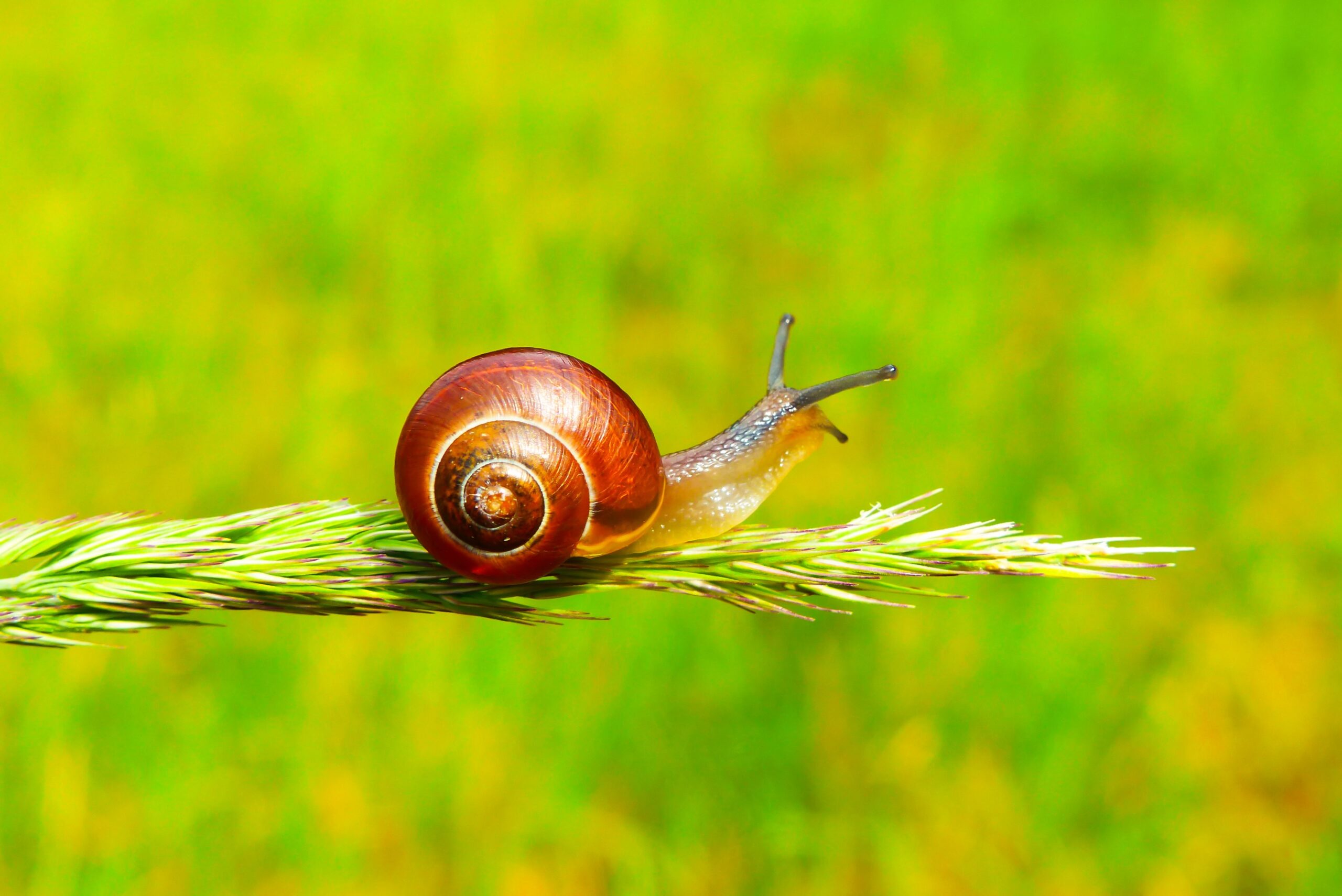Heliciculture is not only a feasible option for farmers due to the few participants in the industry and therefore limited competition, but also due to the market options available both regionally and internationally.
Success of course depends on good agricultural practices. Soils used for snail farming should not be heavy, clayey soil that becomes waterlogged and compacted in the rainy season. Very sandy soil is also undesirable because of its low water-holding capacity. Acidic soils should be avoided because acidity will interfere with the development of the snail’s shell. Soils that are too acidic might be neutralised with lime to about 7 pH. Soils with high organic matter support the growth and development of snails. In general, if a soil supports good growth of cocoyam, tomatoes, and leafy vegetables, it is suitable for snail farming. Before introducing snails to the site, the soil should be loosened by tilling. It is important to remember that snails need damp, not wet, environments, therefore despite their moisture requirement, wet or waterlogged soils must be drained. In areas of high rainfall, rainwater must run off quickly as the snails may drown in excessively wet conditions. A soil moisture content of 80% of field capacity is favourable.
In the hours of darkness, air humidity over 80% will promote good snail activity and growth. Most snail activity takes place 2 to 3 hours after the onset of darkness, including feeding. Low night temperatures rouses activity, and the snails move easily aided by night-time dew. In some cases, to maintain adequate humidity and moisture levels in drier locations, misting sprayers can be used (like those used for plant propagation) − if technically and economically feasible. Snails dig in soil and ingest it.
Good soil favours snail growth and provides some of their nutrition. Lack of access to good soil may result in fragile shells even if the snails have well-balanced feed; the snails’ growth may lag far behind the growth of other snails on good soil. Snails often eat feed, then eat dirt. Sometimes, they eat only one or the other. Eventually, the soil in the snail pens will become fouled with mucus and droppings which would alter its chemical composition, therefore is it important that the soil is changed once every three months. The next phase in snail production is the construction of the snailery. The housing can be extensive, semi-intensive, or intensive, in increasing order of complexity, management, and financial inputs. An extensive production system can be outdoors or comprised of free-range snail pens.

Source: financialfreedomng.com
A mixed, or semi-intensive system will involve egg laying and hatching going on in a controlled environment. In this case the young snails are removed after 6 to 8 weeks to outside pens for growing or fattening or both. An intensive system can include plastic tunnel houses, greenhouses and buildings with controlled climate. Regardless of the size and type of the snail farm, the following requirements must be met: the snailery should be escape-proof as snails are master escapists and can therefore quickly wander all over the farm, entering gardens or places where they are unwanted.
The snailery should also be spacious, of course taking into account the growing stage of the snails (hatchlings, juveniles, breeding snails, or mature snails fattened for consumption). Snails suffer from overcrowding, which impedes their development and increases the risk of diseases. Suitable rearing densities range from > 100/m2 for hatchlings to 7 to 10/m2 for breeding snails. It should also be easily accessible and easy to work in or with, for handling the snails, placing feed, cleaning and other tasks.
Some of the materials that can be utilised for construction include decay and termite-resistant timber. Poles can be made of species of teak like tectona grandis, which is widely planted on other continents as well. Sand-concrete blocks, or mudbricks and second-hand materials, like car tyres, oil drums and old water tanks are good options as well. Galvanised sheets, and polythene sheets, and chicken wire works well for the snails’ protection. Other materials commonly used for the protection of the snails are mosquito nets or nylon mesh, for covering the pens as protection against insects.
Car tyres or oil drums, hutch boxes, trench pens, mini-paddock pens and free-range pens might be considered for simple snaileries. With discarded tyres or oil drums three or four tyres are placed on top of each other, with chicken wire and mosquito mesh between the topmost tyre and the second one from the top. Oil drums should have some holes in the bottom for drainage, be filled with good soil to a depth of 7 to 10 cm, and be fitted with wire plus mosquito mesh on top. Car tyre or oil drum pens are suitable for keeping a few snails (up to about four mature snails in each container).
References
Rygało-Galewska, A., Zglińska, K., Niemiec, T. (2022) Edible Snail Production in Europe. Available at: https://www.mdpi.com/2076-2615/12/20/2732
Helicicultural Entrepreneurship. Available at: https://www.turkeytrainings.com/heliciculture
Snail Farming Startup Guide. Available at: https://www.agri4africa.com/snailfarming-startup-guide/
A Practical Approach To Backyard Snail Farming. (1998) Available at: https://www.ajol.info/index.php/njap/article/view/124545
Akharume, C. O., Alao, B. O., Eyinade, G. A. (2019) Costs and returns analysis of smallholder snail production in southwestern Nigeria. Available at: https://serialsjournals.com/abstract/21186_chap-2_celestine_ohi_akharume-chapter_2.pdf
Ngenwi, A. A., Mafeni, J. M., Etchu, K. A., Oben, F. T. (2010) Characteristics of snail farmers and constraints to increased production in West and Central Africa. Available at: https://idlbnc-idrc.dspacedirect.org/bitstream/handle/10625/48747/IDL-48747.pdf








